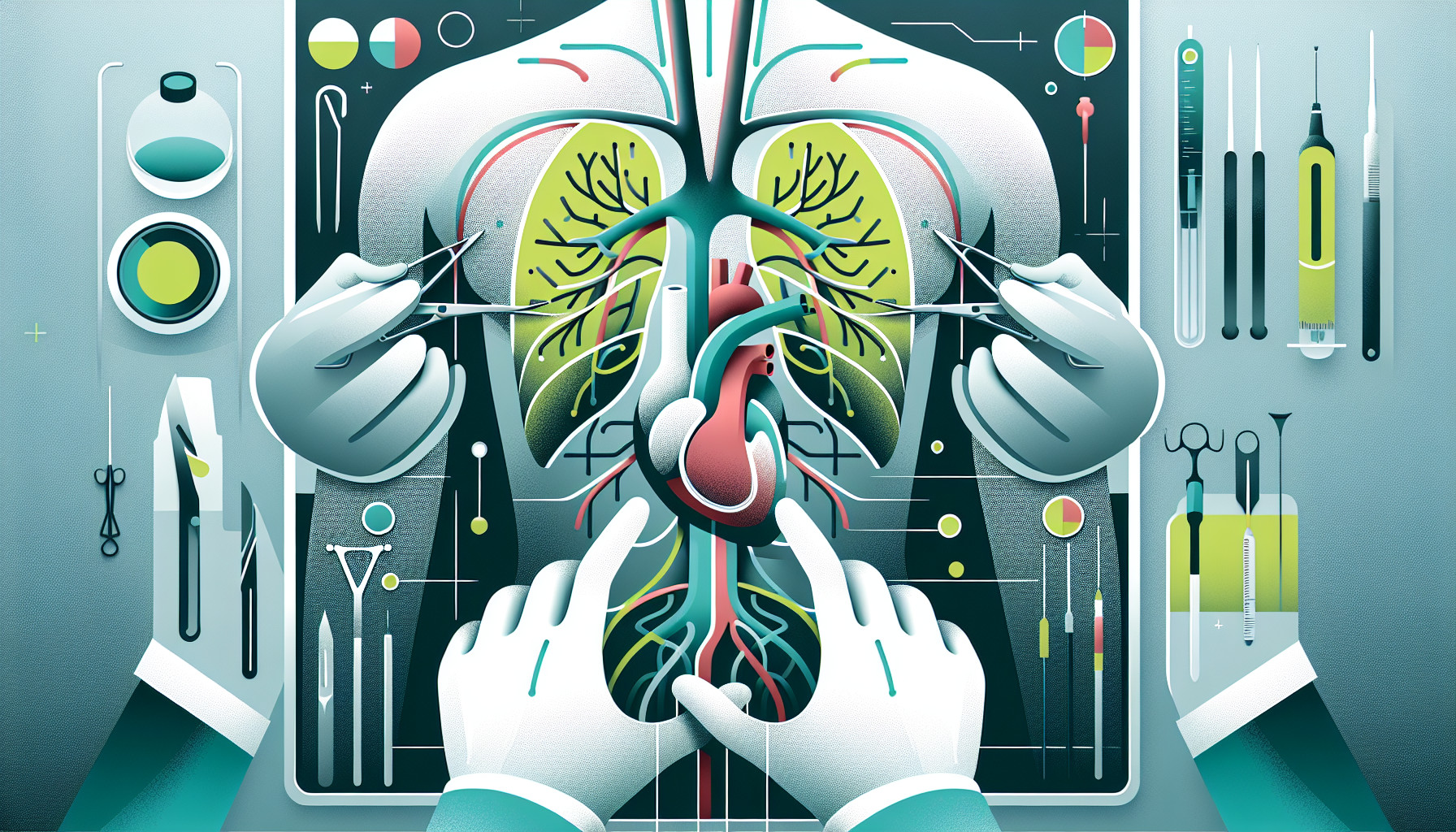Our Summary
This research paper discusses abdominal aortic aneurysms (AAA), which are common in older adults and can cause serious health problems if not treated quickly. There are many possible causes, including injury, infection, and inflammation, while risk factors include smoking, old age, high cholesterol, high blood pressure, and heart disease.
The development of AAA involves an initial damage to the artery, leading to inflammation and breakdown of structural proteins, thus weakening the arterial wall. Early detection is crucial to monitor the size and growth rate of the aneurysm and to assess the risk of rupture. Factors such as size, smoking, growth rate, abnormal biomechanical properties of the aneurysm, and being female can increase the risk of rupture.
Medical treatment focuses on managing risk factors to prevent growth and rupture of the aneurysm. Surgical intervention is used to prevent rupture of high-risk aneurysms, most often determined by size. Sometimes, surgery is required if the aneurysm has already ruptured.
Surgery includes a team approach to assess the patient’s risk and to plan the surgery, which could be either an endovascular or an open surgical repair. After surgery, the patient needs to be closely monitored for complications and, in the case of endovascular repairs, for leaks.
The way AAA is managed has changed quickly in recent years due to advances in technology and techniques, improving the diagnosis and treatment of this condition.
FAQs
- What are some of the possible causes and risk factors of abdominal aortic aneurysms (AAA)?
- How are abdominal aortic aneurysms treated and what does the surgical intervention involve?
- How has the management of abdominal aortic aneurysms changed over the recent years?
Doctor’s Tip
One helpful tip a doctor might tell a patient about aortic aneurysm repair is to quit smoking if they are a smoker. Smoking is a major risk factor for the development and progression of aortic aneurysms, as it can weaken the arterial walls and increase the risk of rupture. Quitting smoking can significantly reduce the risk of complications and improve the success of surgical interventions. Additionally, maintaining a healthy lifestyle with regular exercise and a balanced diet can also help prevent the progression of the aneurysm.
Suitable For
Patients who are typically recommended aortic aneurysm repair are those with large or fast-growing aneurysms, as well as those who are at high risk of rupture. This includes individuals who are older, have a history of smoking, high blood pressure, high cholesterol, heart disease, or a family history of AAA. Patients who have already experienced a rupture of the aneurysm may also require surgical intervention.
Overall, the decision to recommend aortic aneurysm repair is based on a careful assessment of the patient’s individual risk factors, the size and growth rate of the aneurysm, and the potential benefits and risks of surgery. It is important for patients to work closely with their healthcare provider to determine the best course of action for their specific situation.
Timeline
Before aortic aneurysm repair:
- Initial damage to the artery leading to inflammation and breakdown of structural proteins
- Monitoring of the size and growth rate of the aneurysm
- Assessment of risk factors such as size, smoking, growth rate, abnormal biomechanical properties, and being female
- Management of risk factors to prevent growth and rupture
After aortic aneurysm repair:
- Team approach to assess patient’s risk and plan surgery
- Endovascular or open surgical repair
- Close monitoring for complications, especially leaks in endovascular repairs
- Rapid advances in technology and techniques improving diagnosis and treatment of AAA.
What to Ask Your Doctor
Some questions a patient should ask their doctor about aortic aneurysm repair include:
- What is the size of my aneurysm and how fast is it growing?
- What are the risk factors for my aneurysm and how can I manage them?
- What are the symptoms of a ruptured aneurysm and what should I watch out for?
- What are the different treatment options available for my aneurysm?
- What are the benefits and risks of each treatment option?
- Will I need to undergo surgery for my aneurysm? If so, what type of surgery will be recommended?
- What is the recovery process like after aortic aneurysm repair surgery?
- How often will I need to be monitored after surgery to ensure the aneurysm does not come back?
- Are there any lifestyle changes I should make to reduce the risk of future aneurysms or complications?
- Are there any support groups or resources available for individuals with aortic aneurysms?
Reference
Authors: Anagnostakos J, Lal BK. Journal: Prog Cardiovasc Dis. 2021 Mar-Apr;65:34-43. doi: 10.1016/j.pcad.2021.03.009. Epub 2021 Apr 5. PMID: 33831398
